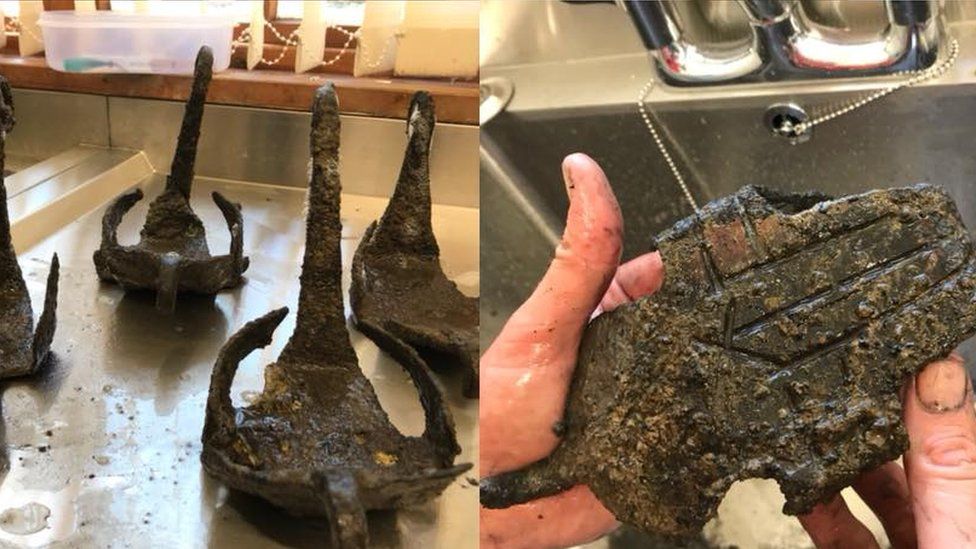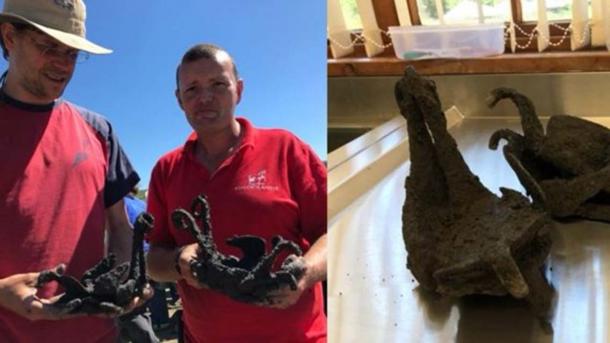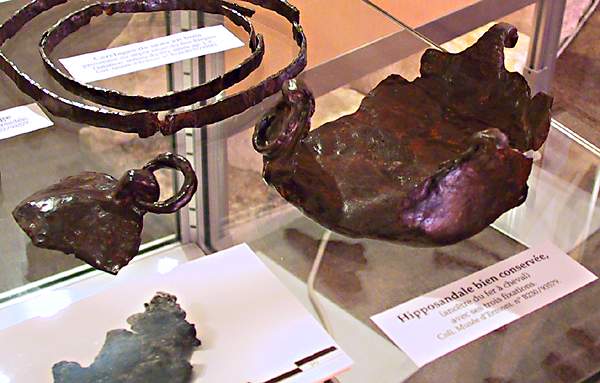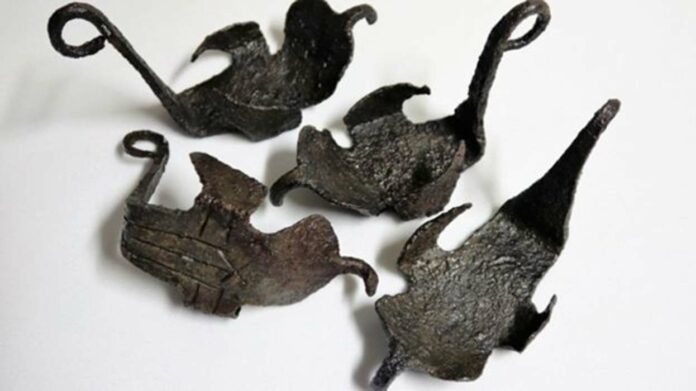The rich history of the Roman Empire continues to captivate scholars and enthusiasts alike, and the recent discovery of a unique set of Roman horseshoes on Hadrian’s Wall in northern England is yet another fascinating chapter in this ongoing story. The BBC’s report on this exciting find sheds light on the everyday life of the Romans stationed along this iconic defensive structure, offering a deeper understanding of their equestrian practices and the challenges they faced in the rugged terrain of the region.
When Romans Build Walls

The Roman occupation of Britain spanned from the 1st to the 5th century AD, and in the 2nd century, the Emperor Hadrian took action to secure the northern frontier of the empire. Concerned by the threat posed by the Picts, who lived in what is now modern-day Scotland, Hadrian ordered the construction of a defensive wall stretching from the Irish Sea to the North Sea. This impressive structure, built of stone and turf, was manned by Roman forces and dotted with towers and forts along its length. Although abandoned by Rome in the early 5th century as the empire faced mounting barbarian attacks, significant sections of Hadrian’s Wall remain standing to this day, a testament to the engineering prowess of the Romans.
The Vindolanda Treasure Trove
One of the most important forts along Hadrian’s Wall is Vindolanda, located in Hexham, Northumbria. Believed to predate the construction of the wall itself, this fort guarded a crucial road and has yielded a wealth of archaeological treasures over the years. Among the most famous finds are the Vindolanda tablets, a collection of wooden documents that provide an unparalleled glimpse into the daily lives of Roman soldiers and civilians on the northern edge of the empire. In addition to these written records, the site has also yielded a trove of everyday items, including an impressive array of well-preserved shoes and, most recently, a bronze hand and what appear to be early Roman boxing gloves.
Shoes of the Equestrian Kind

The latest discovery at Vindolanda is a set of four Roman-era horseshoes, unearthed during a planned excavation at the site. According to the BBC, the find is incredibly rare, as complete sets of Roman horseshoes are seldom encountered. A curator at the UNESCO-listed site noted that it was “incredibly rare to find a full set of Roman horseshoes.”
A preliminary investigation has dated the shoes to between 140 and 180 AD, and their excellent preservation is attributed to the low-oxygen soil conditions at Vindolanda, which have prevented the metal from rusting over the centuries. These unique horseshoes, known to the Romans as “hipposandals,” are more akin to actual shoes, resembling “soup ladles” that would wrap around the sole of a horse’s foot.
Challenging Assumptions about Roman Equestrian Practices

The discovery of this complete set of hipposandals is significant because, as Phys.Org reports, typically only a single hipposandal is found at a time. The fact that all four shoes were deposited together suggests that they belonged to a single horse, and it has been speculated that they may have been buried as a deliberate memorial to a beloved mount.
Moreover, the find challenges the assumption that hipposandals were used solely for beasts of burden. The location of the shoes within a military fortress indicates that they were likely employed by Roman cavalry, potentially in the rugged terrain of northern England. This discovery expands our understanding of the versatility and widespread use of these unique footwear items, which were previously thought to be restricted to more challenging landscapes.
Vindolanda’s Enduring Legacy
The discovery of the ironclad horseshoes at Vindolanda once again highlights the site’s incredible archaeological significance. As an ongoing source of historical wonders, the fort continues to yield insights into the daily lives and practices of the Romans who occupied this remote northern frontier. The find not only contributes to our understanding of equestrian management in the Roman era but also underscores the wealth of untapped knowledge that may still lie buried at this invaluable archaeological site.
Conclusion
The unearthing of the well-preserved Roman horseshoes at Hadrian’s Wall is a testament to the enduring fascination with the Roman Empire and the ability of archaeology to uncover surprising and enlightening glimpses into the past. This discovery, with its implications for our understanding of Roman equestrian practices and the importance of Vindolanda as a historically significant site, serves as a reminder of the richness of the past that continues to be uncovered, layer by layer, in the rolling landscapes of northern England.
